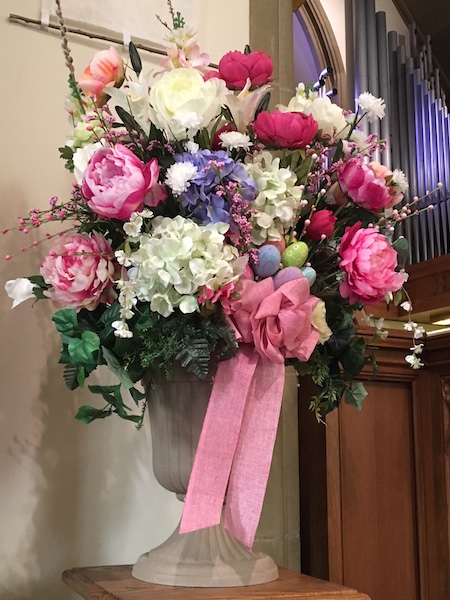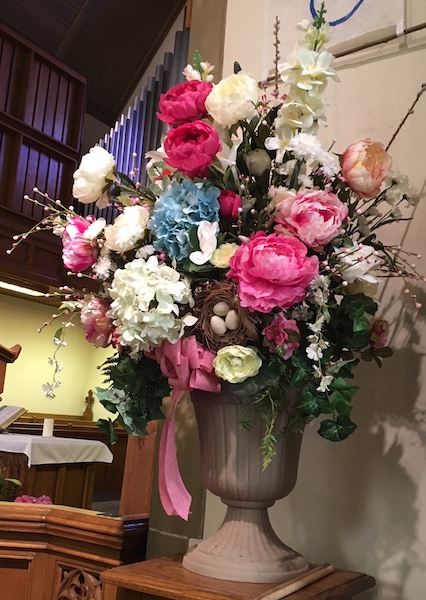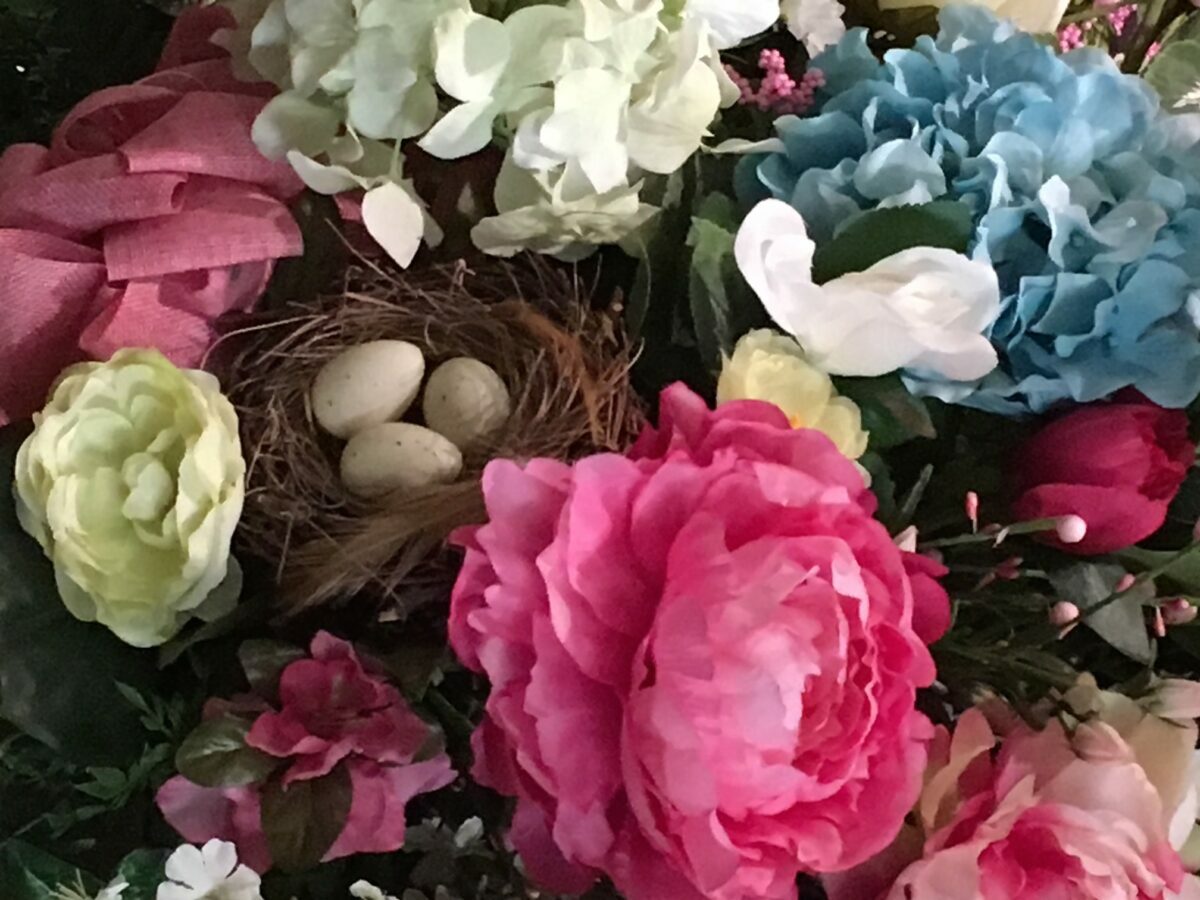
When creating a aesthetic for Easter Sunday, the most important thing to me is the visual contrast of that day with the earlier barrenness of Lent and death and despair of Good Friday and Holy Saturday. While the pinnacle of the liturgical church year, holiday wise Easter often plays second fiddle to Christmas when it comes to decor. Christmas trees, greenery, wreaths– these elements of Advent and Christmas are more readily available for purchase and it’s often just a matter of freshening up the church’s existing trove of Christmas decorations. Easter is more of a blank slate when it comes to decorating. Other than flowers on the altar, most congregations have very few expectations for Easter and don’t invest it with the elaborate preparations they might give to Christmas.
I think this is a real missed opportunity both aesthetically and theologically. When you consider that much of what we do to acknowledge the liturgical seasons in the church, such as the use of certain colors to designate various seasons and holy days, originated as a way to communicate larger theological truths to a largely illiterate congregation. These colors, scents, artwork, greenery and floral embellishments worked in tandem with the music and spoken word to illuminate the Gospel.

When I created these floral arrangements, our Easter verses were “Sing to the Lord a new song” and “Be in Christ a new creation” so I wanted to reflect these truths in the Easter decor with bright, colorful flowers as a contrast to the sticks and bare branches I had used to decorate the sanctuary on Good Friday. I kept a few branches in the actual floral arrangements as a reminder of what had been on the plant stands a few days earlier so that the transition from death to life was even more evident. The other symbols of life, of becoming a new creation, was the nest with eggs and the easter eggs that I tucked into the arrangements. I like to think that viewers were first drawn into the arrangements by the flowers, and then surprised by the inclusion of the eggs and nest. Giving viewers, especially children, something whimsical or unexpected to discover makes the experience more memorable and enjoyable. By investing in a few prominent flowers, I could fill in most of the arrangement with less expensive flowers and floral elements recycled from past arrangements. The “cement” urns were the same ones I created from plastic planters bought at Canadian Tire and then painted with a textured spray paint to resemble stone. (You can find the directions for creating these in this post.)
The arrangements complimented the other Easter decor in the church, including a collection of Easter topiaries in the foyer and paper birds that were waved by the children at the start of the Easter Sunday service. I also created banners featuring the verses of the season that were hung above the floral arrangements, as well as ribbon banners and a small centerpiece for the altar. The overall effect was everything I hoped it would be and, from the feedback I received, achieved my goal of illustrating Christ’s resurrection from the dead.































